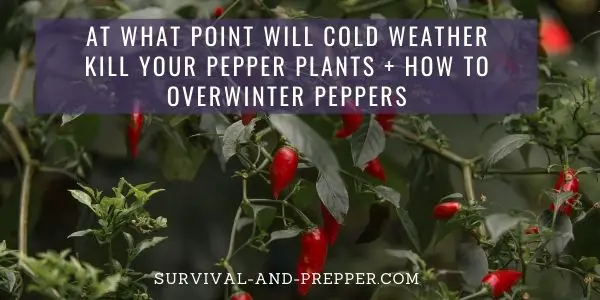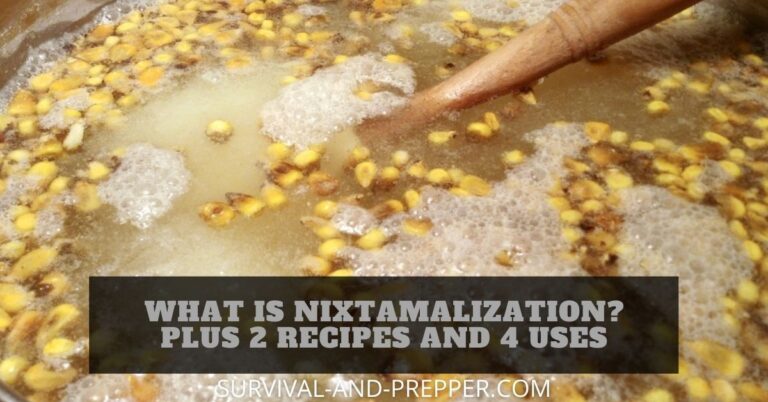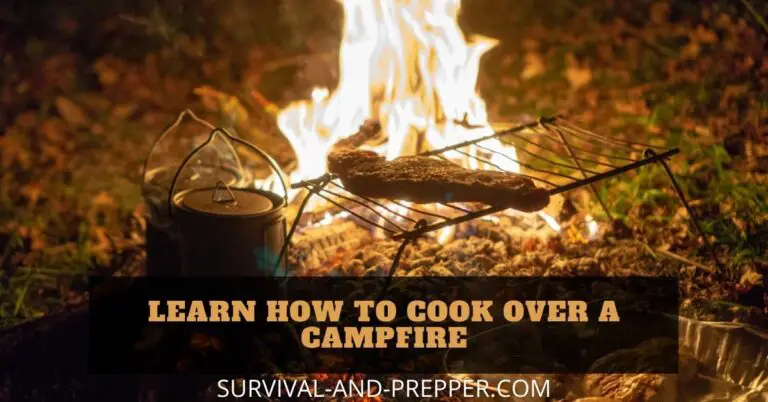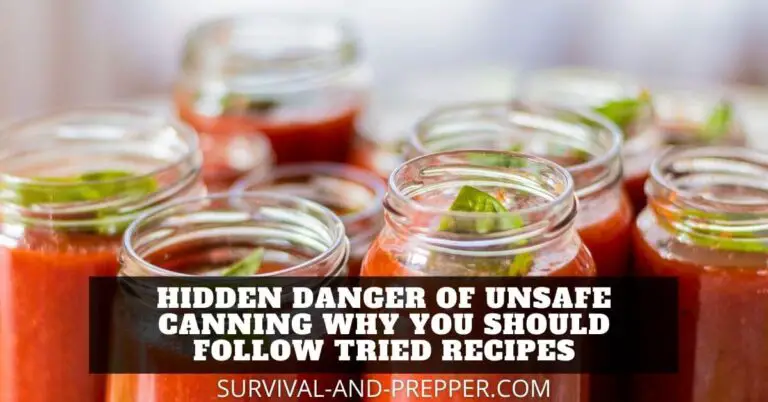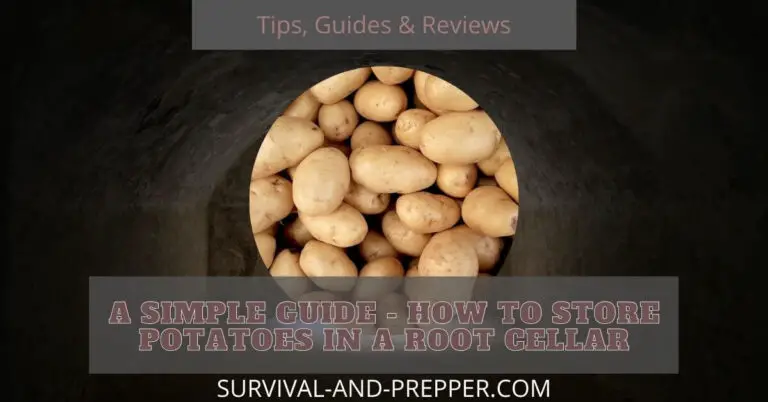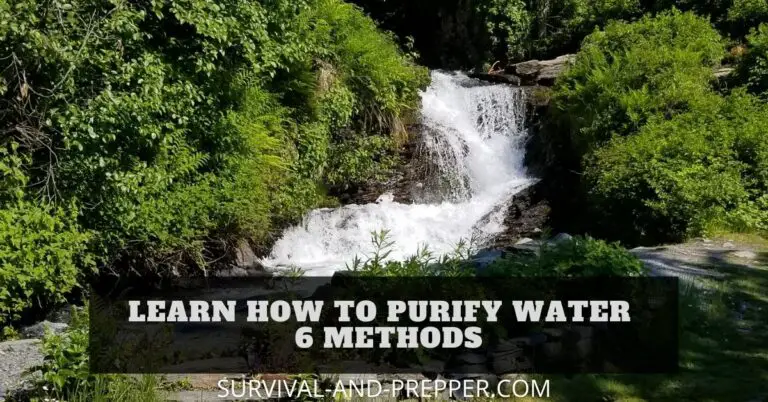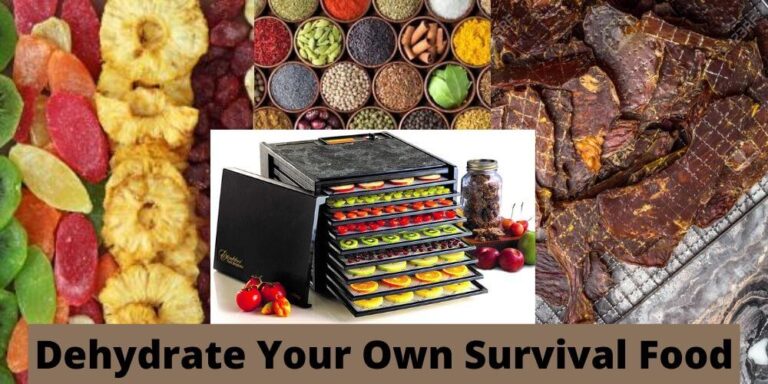Winter Approaches, What Temperatures Will Kill Your Pepper Plants? + How to Prevent This
As winter nears you may be wondering how your garden will fare as the temperatures drop. If you are like me then one of your latest crops is peppers.
For most species of peppers temperatures below 50 to 55 degrees will cause them to begin to go dormant, slowing their growth. If temperatures drop below 32 degrees Fahrenheit or 0 Degrees Celsius the plants will most likely drop their remaining peppers and die. This is due to the water in the cells of the plant freezing and causing permanent damage to the plant.
However, that does not have to necessarily be the fate of your peppers. Read on to find out more about cold and your peppers and how to overwinter the plants to get an early start the following year.
Winter and Your Pepper Plants
It is important to know how various temperatures affect your crops. For instance I have always heard that pepper plants like sun, heat and lots of water. However, during a recent season I planted multiple species of peppers with the intent of creating some different salsas.
I noted during this that some plants thrived in the extreme heat of a south Georgia Summer while others did not do as well even though the conditions were identical.
However, as soon as temperatures started dropping in September those same plants that had been struggling took off yielding nearly 5 times the number of peppers they had previously grown.
With that in mind I began to look into how the cold would affect my peppers as we neared October and November.
Research online indicated that at temperatures below 50 degrees the peppers would likely become dormant, and for all but the hardiest plants temperatures below 32 degrees will cause permanent damage to the cells.
If you live in a climate along the southern part of the US such as Florida, Texas and Southern California to name a few then it is likely your peppers may be able to survive through the winter with minimal assistance.
For the rest of the country there are some techniques you can employ to help your plants survive the winter.
Freezing Temperatures
First it is important to know that it is not the cold, per se, that kills the peppers. It is frost, or freezing. Much as ice creates cracks in the roads and can shatter an already chipped windshield, the water in the cells of a plant freezing causes the plant cells to rupture.
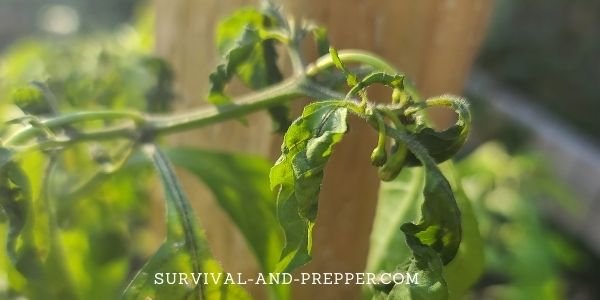
While you can not see this damage in most cases, it is usually enough to kill the plants. So the first step in preserving your plants over the winter is to shield them from the cold.
3 Ways to Preserve Your Pepper Plants
There are several methods to protect your plants over the winter. Often the best option will depend on how you planted them in the first place.
If you grew your peppers in pots instead of an actual garden then often you can bring them inside in order to protect them from the cold. In this case the use of a UV growing light, could allow you to continue growing peppers throughout the winter.
If on the other hand you have your plants outside in a more traditional garden then perhaps a temporary or permanent greenhouse is an option. You can find relatively inexpensive options for temporary green houses such as this complete walk in kit on Amazon among other sites.
The final option and the one that I use most frequently is to overwinter your plants. Basically this is taking advantage of the plant’s natural tendency to go into a dormant state once it reaches a certain temperature. Then while in this dormant state you can store it in a cool place with minimal care until the following season. More on this later.
How to Care for Peppers in Winter?
If you live in a milder climate and intend on leaving your plants in the garden then some basic changes to your care may keep them thriving.
- Deep water once a week.
- Mulch around the base with 2 to three inches of mulch.
- Monitor temperatures and cover with plastic or a blanket if below 40 degrees.
- Do not use fertilizer.
While watering your plants may seem counterintuitive. The water in the soil actually allows it to hold heat longer as it is a better insulator.
Make sure to water while it is light outside and about once per week to the point that your soil damp down to about six inches.
Mulch will help not only keep the water in place, but will also protect the base of your plant and ground from wind chill. Wind chill can often be several degrees or more lower than the actual temperature and can lead to rapid freezing.
When you see that temperatures are likely to drop below 40 degrees it is best to cover your plants to not only protect them from the colder temperatures, but also help insulate some of the ground heat in.
You can use plastic or blankets for this, though if you plan to leave them covered for a few days, clear plastic works the best as it allows light in and will help raise the temperatures inside of the enclosure similar to a greenhouse.
Fertilizing or “feeding” your plants in the winter can actually cause more harm than good. This is due to the plants being in a dormant state.
In their dormant state they are not using many nutrients from the soil and it is possible that the same level of feeding they received in the summer, could cause a build up of nutrients, resulting in burning of the plant and its roots.
How to Overwinter Your Pepper Plants
Most pepper plants originated in tropical climates where they do not experience a “winter” so to speak. In these conditions it is not uncommon for pepper plants to live multiple years as long as they aren’t affected by disease.
With that in mind you can take advantage of this longer lifespan by overwintering your peppers.
As mentioned before, overwintering your pepper plants takes advantage of the plant’s dormant state. Here is a quick rundown on the steps to overwinter your peppers.
- Prune back the limbs and leaves.
- Dig up 6 inches around to loosen soil on the roots.
- Place into a new pot with slightly watered soil.
- Bring inside into a cool area with some light.
- Pluck the remaining leaves from the plant.
- Check soil moisture once a week keeping it just slightly damp but not wet.
- Replant Outside two weeks after last frost.
Normally pepper plants and many other garden plants will become dormant and slow their growth when temperatures drop below about 50 degrees fahrenheit or 10 degrees celsius.
During this time they can be uprooted, and stored with minimal harm to them in most cases.
Many people who overwinter their plants will simply dig them up and place them into pots so that they can bring them inside. However, this is not the only method you can use.
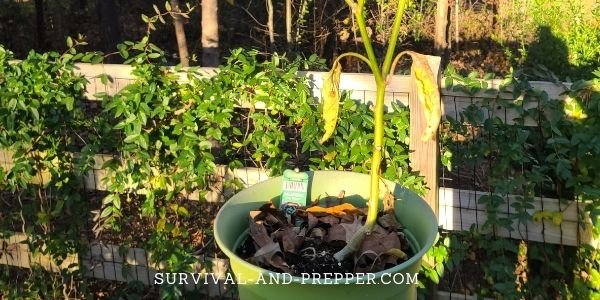
Once you have decided that your peppers growing season is over, and temperatures have fallen to at least below 60 degrees on a consistent basis then remove all peppers from your plants.
You will then want to trim back any excess limbs. For this I prefer to have any off shoots a maximum of 8 to 10 inches, pruning them just above the last leaf split at this size. The main stem I will sometimes let go as long as 14 to 16 inches, but it can also be cut back to aout 10 if size is an issue.
Once these limbs are pruned off and out of the way using a sharp point shovel, dig up the area around your plant out to about 6 inches to loosen the soil around the roots.
If you are worried about pests you can shake all of the soil loose from the roots at this point and carefully place the pepper plants into your pot with new clean potting soil.
If you intend on storing them in a basement and pests aren’t as big of a concern, you can simply place the root ball, dirt and all into your pot.
Bring your newly transplanted pepper plants inside, placing them in a location where they can receive an hour or 2 of sunlight per day and they will remain relatively cool.
At this point, to ensure they remain dormant I like to pinch off any remaining leaves. Don’t worry, they will come back once returned to the outside in the spring.
Once you are ready to put them back outside in the spring I like to take them outside for a few hours each day during the first two weeks after your last frost. I bring them back in after a few hours each day. This allows them to wake up without being damaged by too much sun.
You can then plant them back in the ground, watering thoroughly and they should have a head start on a new seedling producing the first crop of peppers much quicker.
Alternate Method of Overwintering
I have not tried this method myself, but I have a friend who swears by it. He has a secondary fridge in his basement that he uses for plants.
As fall season nears its end he plucks up his pepper plants, prunes them back to 10 inches and removes the dirt from their roots.
He then wraps a damp paper towel around the roots followed by two more dry paper towels. A final wrap of saran wrap is placed around this and he lays them down on the shelf in his refrigerator which is set at 45 degrees.
He leaves them in the refrigerator for 2 or 3 days and then places them on a shelf in his basement where he has a grow light set on a 1 hour timer every 24 hours.
From that point, he doesn’t touch them again until spring when he turns the grow light up to 4 hours every 24 hours and then plants them outside after the first frost.
His theory behind this method is that by placing them into the refrigerator it forces the dormant state and the wrapped roots keep their moisture intact without causing rot. He likens this to you purchasing roses and other plants that are shipped wrapped and leafless.
It Dropped Below 32 Degrees are my Peppers Dead
While you want to make sure and protect your peppers from low temperatures, it is possible that if pepper plants were exposed to temps below 32 for a short period that they may recover.
This is especially true if you have older mature plants, or peppers that tend to have a woody main stem. These varieties are slightly more tolerant of cold due to their thicker stems.
If your peppers have been exposed to temperatures below 32 degrees, harvest any fruits that remain. Place these in a warm area where they can finish ripening.
Monitor the plant for signs of rot or damaged leaves. This will most often exhibit blackening of the leaves and stems. If you notice only the edges of the leaves are turning black you can often prune these off and the plant will recover.
However, damage to the stems or roots will often result in the plant dying.
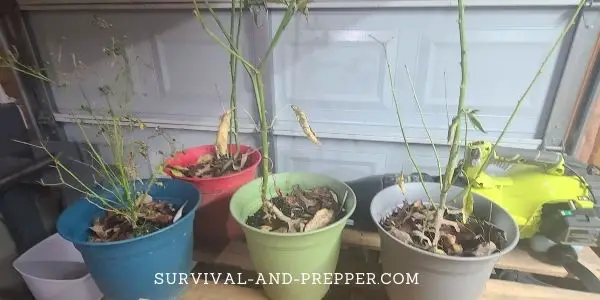
Conclusion: Tips For Giving Your Chili Plants a Fighting Chance in the Cold
While most pepper plants will not survive temperatures below 32 degrees fahrenheit, winter and the impending cold do not have to be the end of your pepper plants. You can continue growing your peppers by either bringing them inside to a warm environment or placing them in a greenhouse.
If you wish to simply preserve them until the following season, this can also be accomplished by placing them into a greenhouse or overwintering them in a basement or other cool area inside of your home.
Peppers by their nature are perennial plants and with a few simple steps can continue growing year after year. This is especially useful when growing rare or unique varieties.
